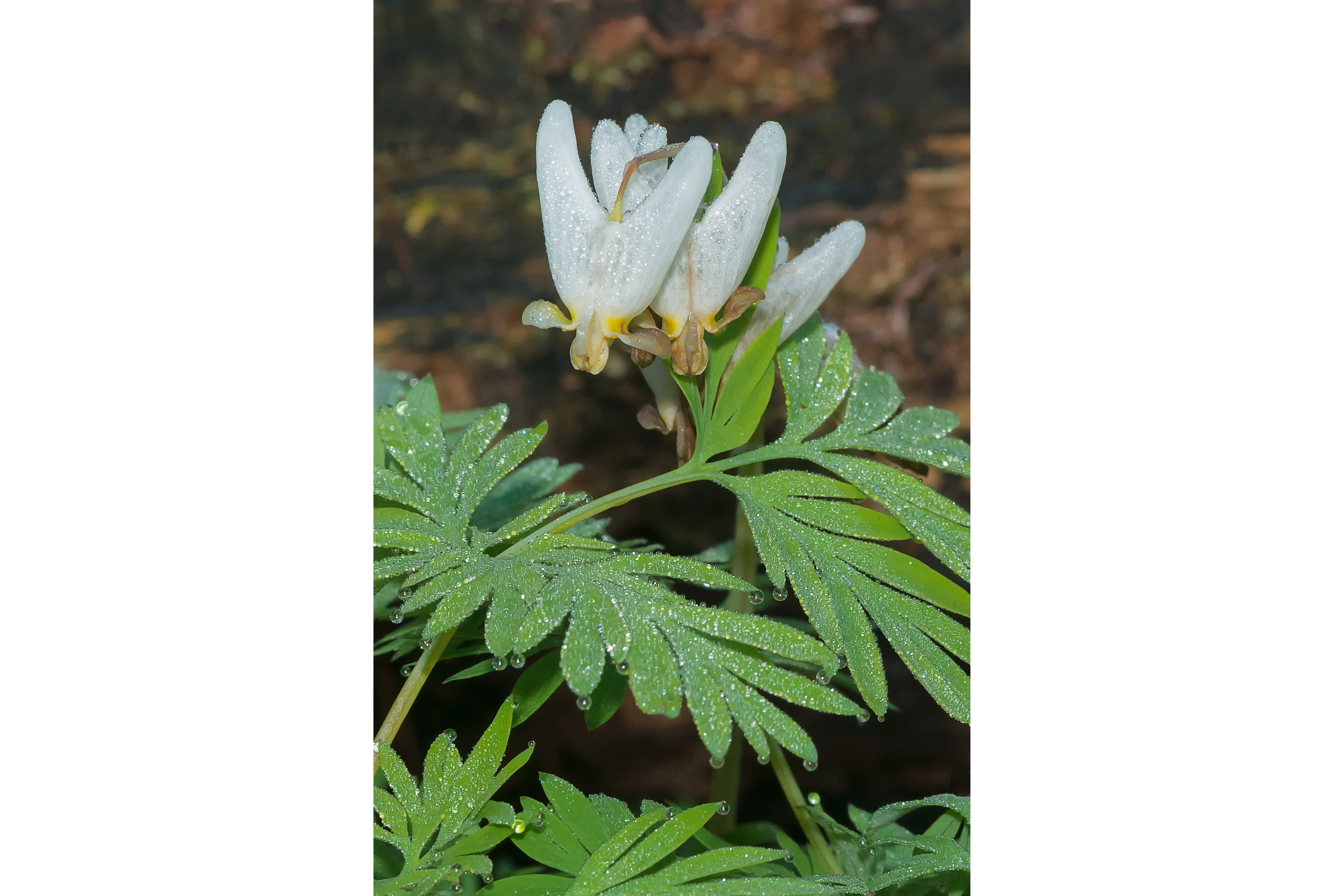Dutchman's breeches
(Dicentra cucullaria)

Description
Dicentra cucullaria, Dutchman's britches, or Dutchman's breeches, is a perennial herbaceous plant, native to rich woods of eastern North America, with a disjunct population in the Columbia Basin. The common name Dutchman's breeches derives from their white flowers that look like white breeches. The rootstock is a cluster of small pink to white teardrop-shaped bulblets (more precisely, miniature tubers). Leaves are 10–36 cm (4–14+1⁄4 in) long and 4–18 cm (1+1⁄2–7 in) broad, with a petiole (leaf stalk) 5–24 cm (2–9+1⁄2 in) long. They are trifoliate, with finely divided leaflets. The flowers usually white, rarely suffused with pink, 1–2 cm (1⁄2–3⁄4 in) long. They are produced in early spring in racemes of 3 to 14 flowers on peduncles (flower stalks) 12–25 cm (4+3⁄4–9+3⁄4 in) long. Unlike the closely related Dicentra canadensis (squirrel corn), the flowers lack fragrance. The pistil of a pollinated flower develops into a slender pod 7–16 mm (1⁄4–5⁄8 in) long and 3–5 mm (1⁄8–3⁄16 in), narrowed to a point on both ends. The capsule splits in half when the seeds are ripe. The seeds are kidney-shaped, with a faint netlike pattern. Each one has a fleshy organ called an elaiosome that attracts ants. Dutchman's breeches is one of many plants whose seeds are spread by ants, a process called myrmecochory. The ants take the seeds to their nest, where they eat the elaiosomes, and put the seeds in their nest debris, where they are protected until they germinate. They also get the added bonus of growing in a medium made richer by the ant nest debris. The leaves and flower stems die back in late spring after the seed has ripened, and the bulblets remain dormant through the summer. In the fall, starch in the bulblets is converted to sugar, and the beginnings of the next spring's leaves and flowers develop below ground. The western populations have sometimes been separated as Dicentra occidentalis on the basis of often somewhat coarser growth, but do not differ from many eastern plants in the Blue Ridge Mountains of Virginia Dicentra cucullaria is dependent on bumblebees (especially Bombus bimaculatus, a common eastern North American species) for cross-pollination. In fact, the flower structure and mechanism by which it is pollinated indicate that it is adapted for bumblebees, which can separate the outer and inner petals of the flower.
Taxonomic tree:







